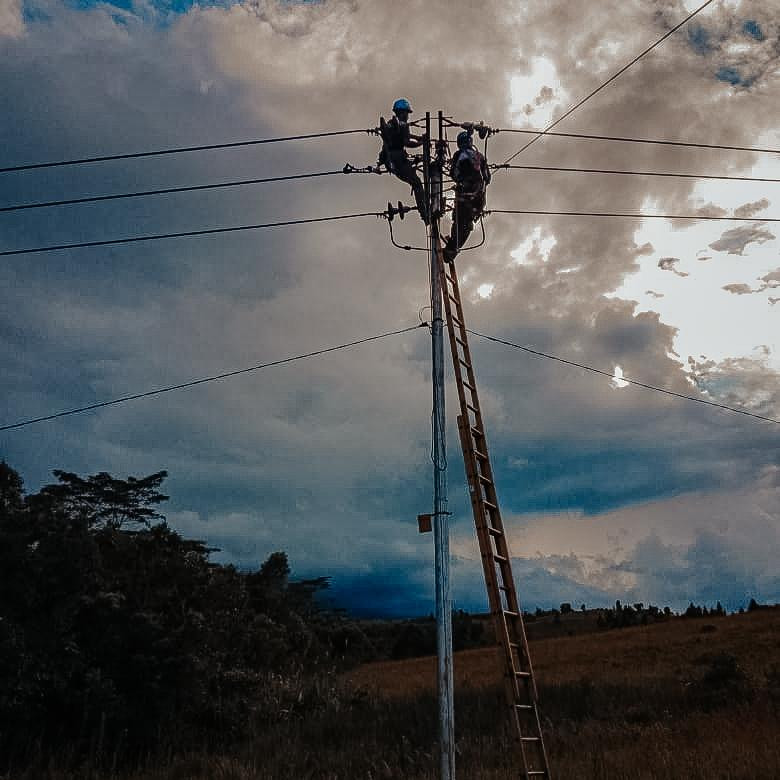Popular Reads
Top Results
Can't find what you're looking for?
View all search resultsPopular Reads
Top Results
Can't find what you're looking for?
View all search resultsPLN to receive Rp 9.6t to build power infrastructure
Change text size
Gift Premium Articles
to Anyone
S
tate-owned electricity giant PLN is slated to receive Rp 9.6 trillion (US$695 million) in state capital injections (PMN) from the government this year to develop power infrastructure in Indonesia and increase the country’s electrification ratio.
The capital comprises Rp 5 trillion from the 2020 state budget and Rp 4.6 trillion diverted from the Energy and Mineral Resources Ministry budget. PLN will use the capital to develop renewable energy power plants, power lines and substations.
The funds allocation is stipulated in Government Regulation No. 37/2020 and No. 36/2020, both of which were issued on July 7.
“We will use the funds as equity and reduce PLN loans,” PLN president director Zulkifli Zaini told House of Representatives lawmakers in Jakarta on Monday evening.
His presentation and the regulations show that 86 percent of the capital is slated to develop transmission infrastructure, including high-voltage power lines and substations, all in western Indonesia except for several projects in Sulawesi.
The country’s heavy investment in the infrastructure of electricity distribution is part of Indonesia’s efforts to achieve a 100 percent electrification ratio this year. The ratio – a measure of the proportion of communities with electricity – reached 98.89 percent last year.
However, Zulkifli said the latest capital injection was insufficient to meet Indonesia’s power infrastructure targets. He said that meeting such targets would cost an estimated Rp 15.2 trillion, funds that the company has been raising through bank loans and global bonds.
PLN slated 3 percent of the working capital injection to be used for electricity distribution infrastructure and 11 percent for renewable energy power plants in Sulawesi, Kalimantan, Aceh, Papua island and East Nusa Tenggara. The latter two are Indonesia’s most impoverished regions.
“The [3 percent] capital is only for renewables. Not for fossil fuels,” added Zulkifli.
Energy analyst Fabby Tumiwa said the use of renewable energy was cost-effective, as the state capital injections would be used to electrify 433 remote villages, most of which were located in West Papua and Papua.
Many of the targeted villages in Papua are located in densely forested mountain areas.
Read also: Indonesia to electrify 433 remote eastern villages
“The most cost-effective solution to provide electricity there [in Papua and West Papua] is through the use of local energy, the renewable energy sources. An even better option is to distribute the plants’ electricity with a mini-grid or micro-grid,” he said.
In electrifying the villages, PLN plans to expand electricity networks, build renewable energy power plants and distribute handheld ‘Talis’ battery packs. PLN estimates the electrification program would cost at least Rp 1.26 trillion.
For PLN, expanding its electricity networks is also a strategy to weather a domestic electricity oversupply that strains the company’s cash flow due to the lower demand during the pandemic.
The electricity giant is particularly focused on expanding its network to high industrial activity regions such as manufacturing-heartland Java and mineral-rich Sulawesi.
PLN’s spending on privately owned power plants (IPPs) is projected to exceed its own fuel spending by 2021, due to the oversupply, warns a recent Institute for Energy Economics and Financial Analysis (IEEFA) study.
IEEFA director Melissa Brown, who authored the study, said the COVID-19 pandemic exacerbated the financial problem as electricity domestic demand collapsed yet PLN remains obligated to buy a certain amount for electricity from IPPs.
“The COVID-19 crisis has upended Indonesia’s financial settings and PLN’s dealings with the Indonesian public and global markets will need to be adjusted to face the new reality,” she said in a statement on April 7.
PLN booked a net loss of Rp 38.9 trillion in this year’s first quarter, down from a net profit of Rp 4.12 trillion in the same period last year, after the rupiah exchange rate fell to a record low against the greenback in March.










